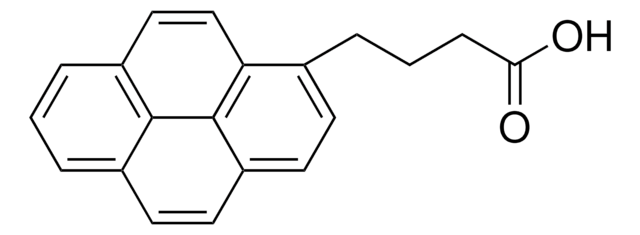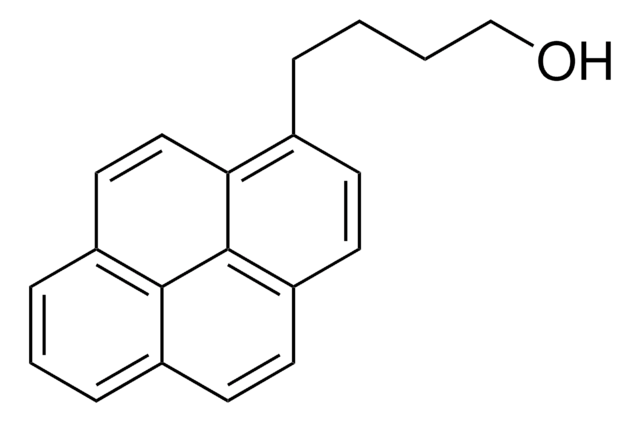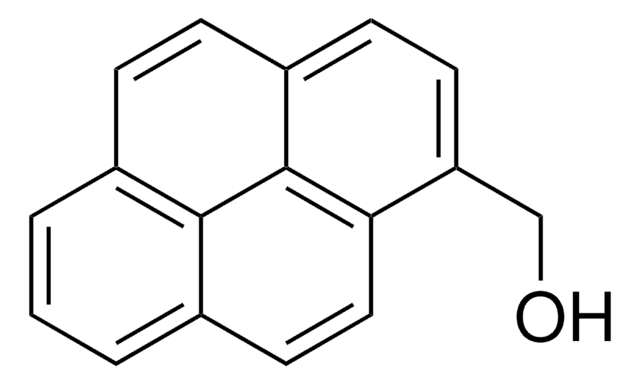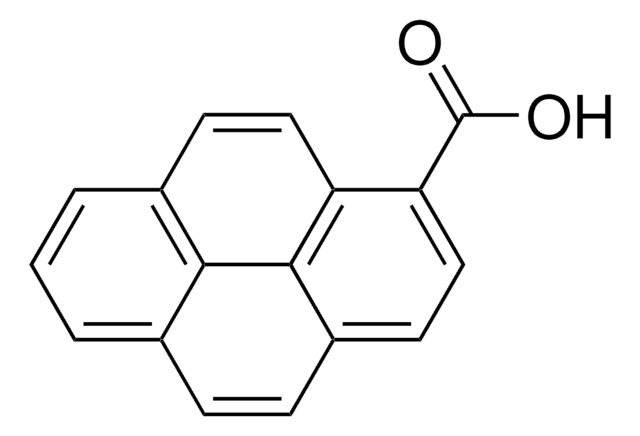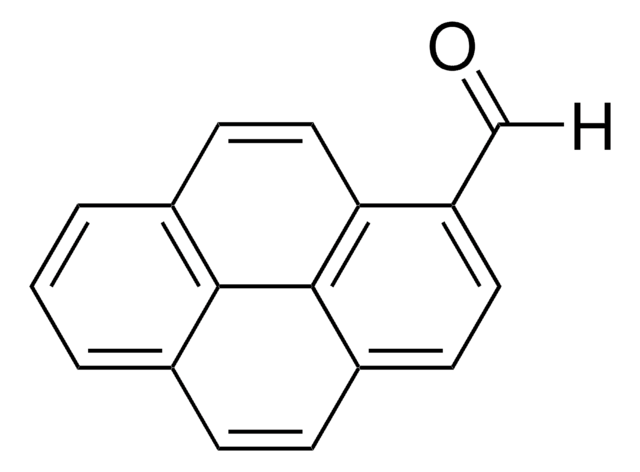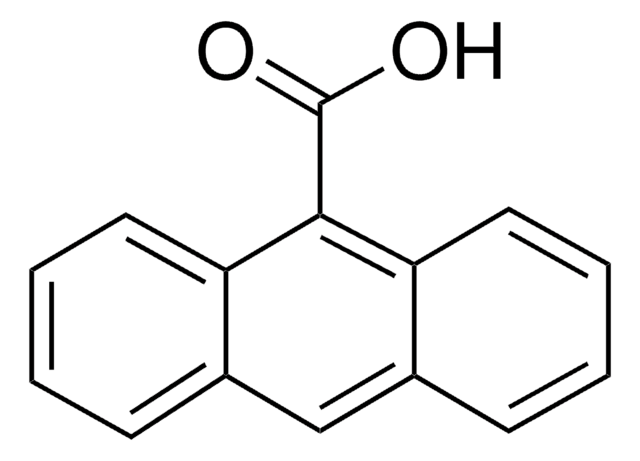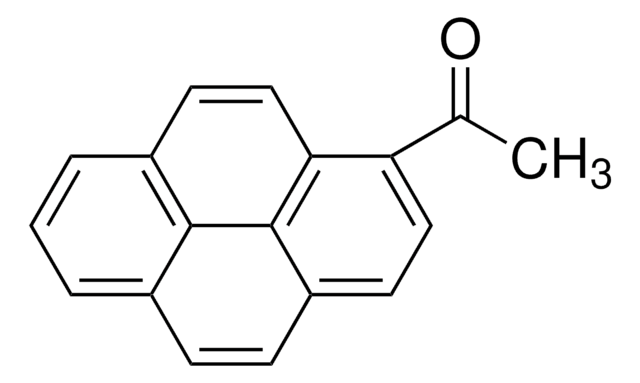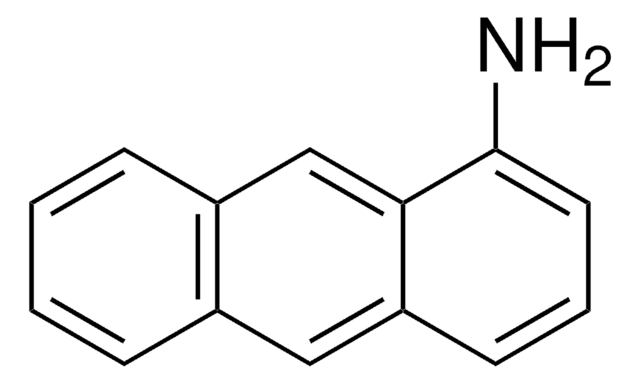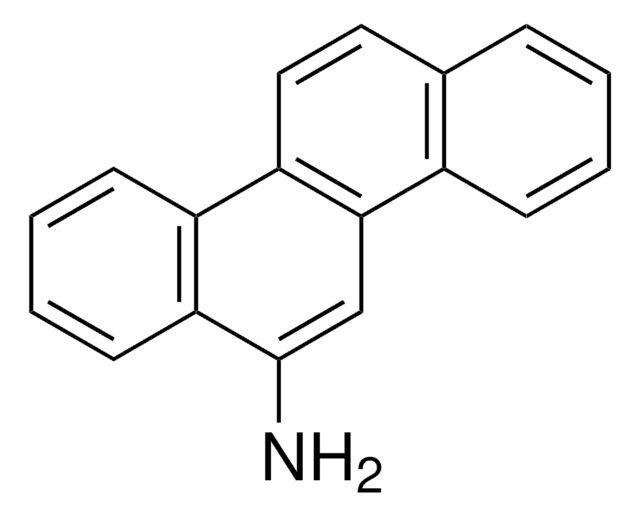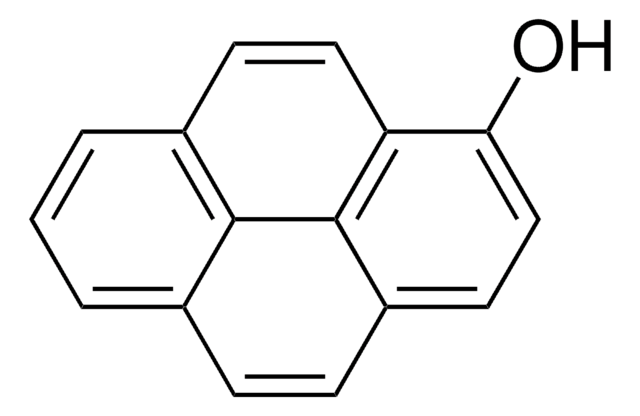401633
1-Pyrenmethylamin -hydrochlorid
95%
Synonym(e):
PMA
Anmeldenzur Ansicht organisationsspezifischer und vertraglich vereinbarter Preise
Alle Fotos(2)
About This Item
Empirische Formel (Hill-System):
C17H13N · HCl
CAS-Nummer:
Molekulargewicht:
267.75
MDL-Nummer:
UNSPSC-Code:
12352100
PubChem Substanz-ID:
NACRES:
NA.22
Empfohlene Produkte
Qualitätsniveau
Assay
95%
Form
powder
mp (Schmelzpunkt)
258 °C (dec.) (lit.)
SMILES String
Cl[H].NCc1ccc2ccc3cccc4ccc1c2c34
InChI
1S/C17H13N.ClH/c18-10-14-7-6-13-5-4-11-2-1-3-12-8-9-15(14)17(13)16(11)12;/h1-9H,10,18H2;1H
InChIKey
RGNMXKKNDSHTFD-UHFFFAOYSA-N
Verwandte Kategorien
Allgemeine Beschreibung
1-Pyrenemethylamine hydrochloride is an organic building block.
Anwendung
1-Pyrenemethylamine (PyNH2) has also been used for the synthesis of:
It can also be used for the synthesis of 4,6-dichloro-2-pyrenemethylamine-1,3,5-triazine, a precursor to synthesize a star shaped polymer 4,6-bis(9H-carbazol-2-yloxy)-2-(pyrenemethylamine)-1,3,5 triazine (TPC).
- Pyrenyl hyaluronan (Py-HA), a pyrenyl-based polymer that can be used for the development of pH-triggered drug carriers.
- An electrochemical electrode of reduced graphene oxide bound with pyrene functionalized folic acid derivative.
It can also be used for the synthesis of 4,6-dichloro-2-pyrenemethylamine-1,3,5-triazine, a precursor to synthesize a star shaped polymer 4,6-bis(9H-carbazol-2-yloxy)-2-(pyrenemethylamine)-1,3,5 triazine (TPC).
1-Pyrenemethylamine hydrochloride (PyNH2) has been used for the loading of human telomerase reverse transcriptase (hTERT) small interfering RNA (siRNA) to the functionalized graphene oxide (GO) for the tumor targeting delivery of siRNA.
1-Pyrenemethylamine hydrochloride has been used in the preparation of 1-pyrenemethylamine. It may be used for the noncovalent functionalization of SWNTs with cationic moieties which binds strongly to the negatively charged phosphate backbone of the DNA. It may be used in the preparation of the following Schiff-base ligand:
- pyren-1-ylmethyl-[2-(6-{2-[(pyren-1-ylmethylimino)-methyl]-phenoxymethyl}-pyridin-2-ylmethoxy)-benzylidene]-amine
- 2(pyren-1-ylmethyl-{2-[6-(2-{[(pyren-1-ylmethyl)-amino]-methyl}- phenoxymethyl)-pyridin-2-ylmethoxy])-benzyl}-amine
Signalwort
Warning
H-Sätze
Gefahreneinstufungen
Eye Irrit. 2 - Skin Irrit. 2 - STOT SE 3
Zielorgane
Respiratory system
Lagerklassenschlüssel
11 - Combustible Solids
WGK
WGK 3
Persönliche Schutzausrüstung
dust mask type N95 (US), Eyeshields, Gloves
Hier finden Sie alle aktuellen Versionen:
Besitzen Sie dieses Produkt bereits?
In der Dokumentenbibliothek finden Sie die Dokumentation zu den Produkten, die Sie kürzlich erworben haben.
Kunden haben sich ebenfalls angesehen
Fabien Giroud et al.
Biosensors & bioelectronics, 87, 957-963 (2016-09-26)
We report the functionalization of multi-walled carbon nanotubes (MWCNTs) electrodes by a bifunctional nitroaromatic molecule accomplished via π-π interactions of a pyrene derivative. DTNB (5,5'-dithiobis(2-nitrobenzoic acid)) has the particularity to possess both electroactivable nitro groups and negatively charged carboxylic groups.
Sudarat Yenjai et al.
Journal of photochemistry and photobiology. B, Biology, 173, 35-42 (2017-05-30)
A new photochemical reagent, succinic acid-1(1-pyrene)methylamide (PMA-SUC), was developed to recognize the specific binding sites on model proteins, egg-white lysozyme and avidin. The interaction of the photochemical reagent with the proteins was studied by UV-Vis, fluorescence spectroscopic methods and docking
Synthesis and fluorescence properties of carbazole based asymmetric functionalized star shaped polymer.
Guzel M, et al.
Journal of the Electrochemical Society, 164(2), H49-H55 (2017)
Reactively formed block and graft copolymers as compatibilizers for polyamide 66/PS blends.
Jeon HK, et al.
Polymer, 45(1), 197-206 (2004)
Intramolecular excimer formation and sensing behavior of new fluorimetric probes and their interactions with metal cations and barbituric acids.
Lodeiro C, et al.
Sensors and Actuators B, Chemical, 115(1), 276-286 (2006)
Unser Team von Wissenschaftlern verfügt über Erfahrung in allen Forschungsbereichen einschließlich Life Science, Materialwissenschaften, chemischer Synthese, Chromatographie, Analytik und vielen mehr..
Setzen Sie sich mit dem technischen Dienst in Verbindung.
